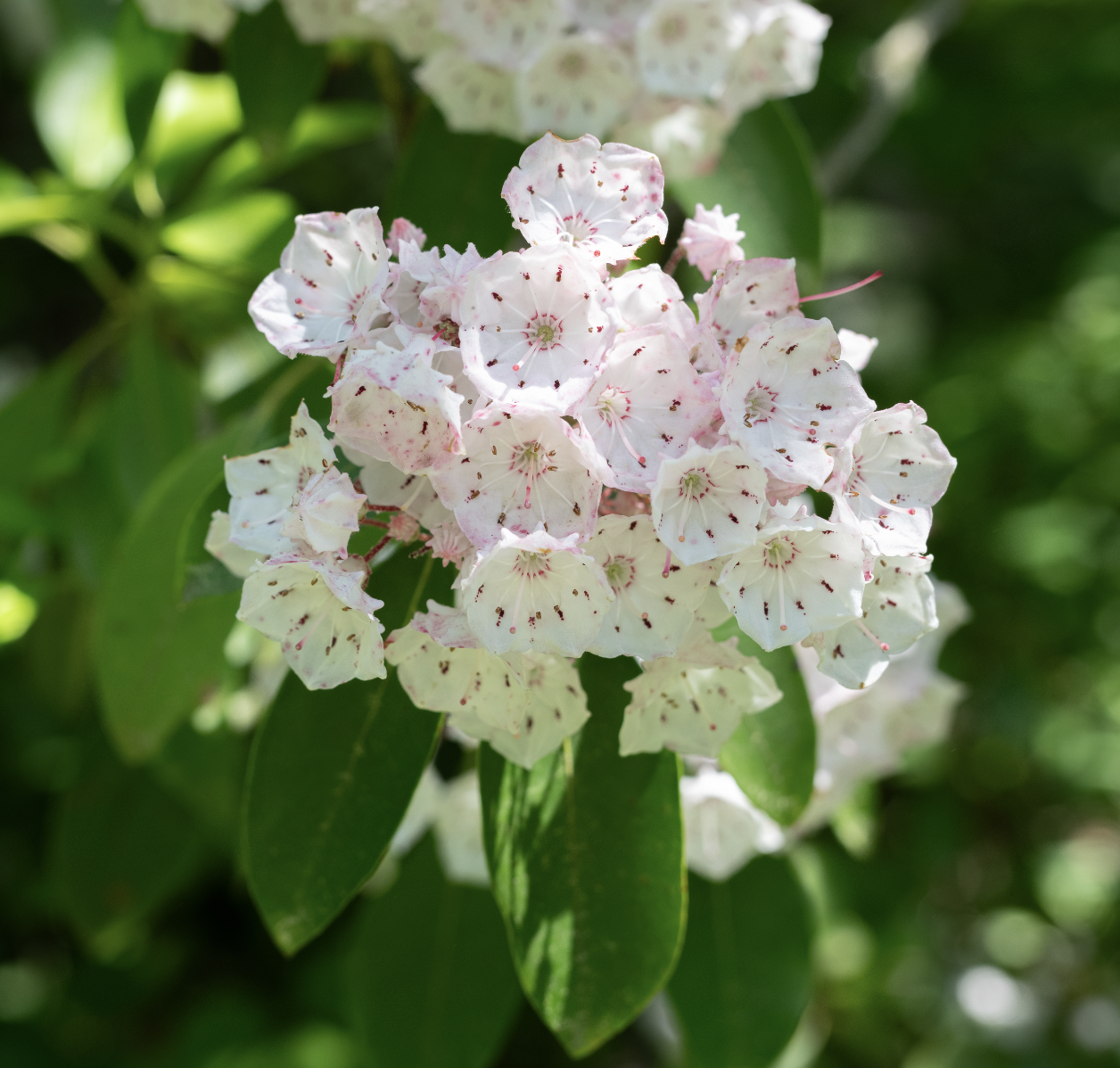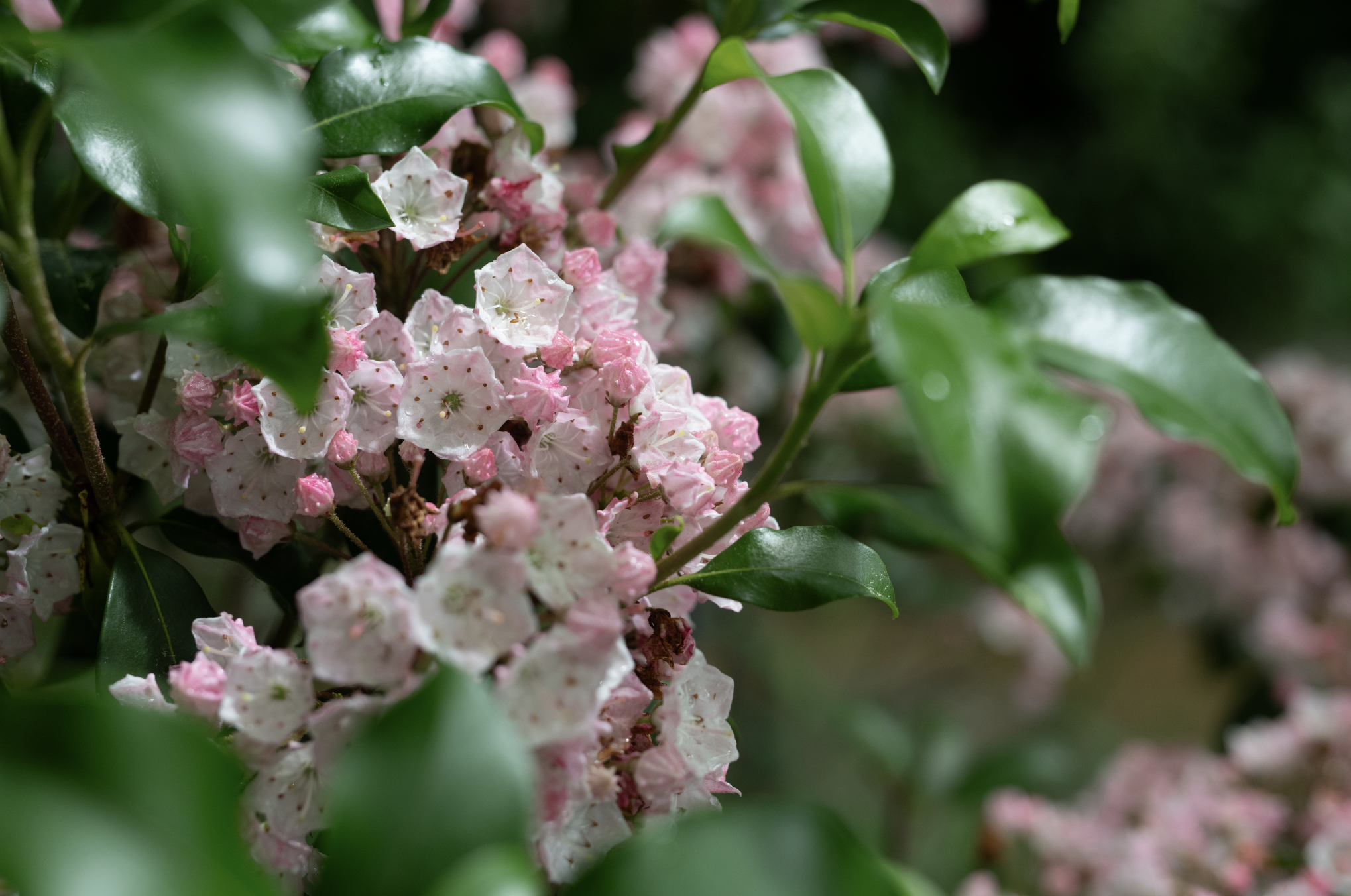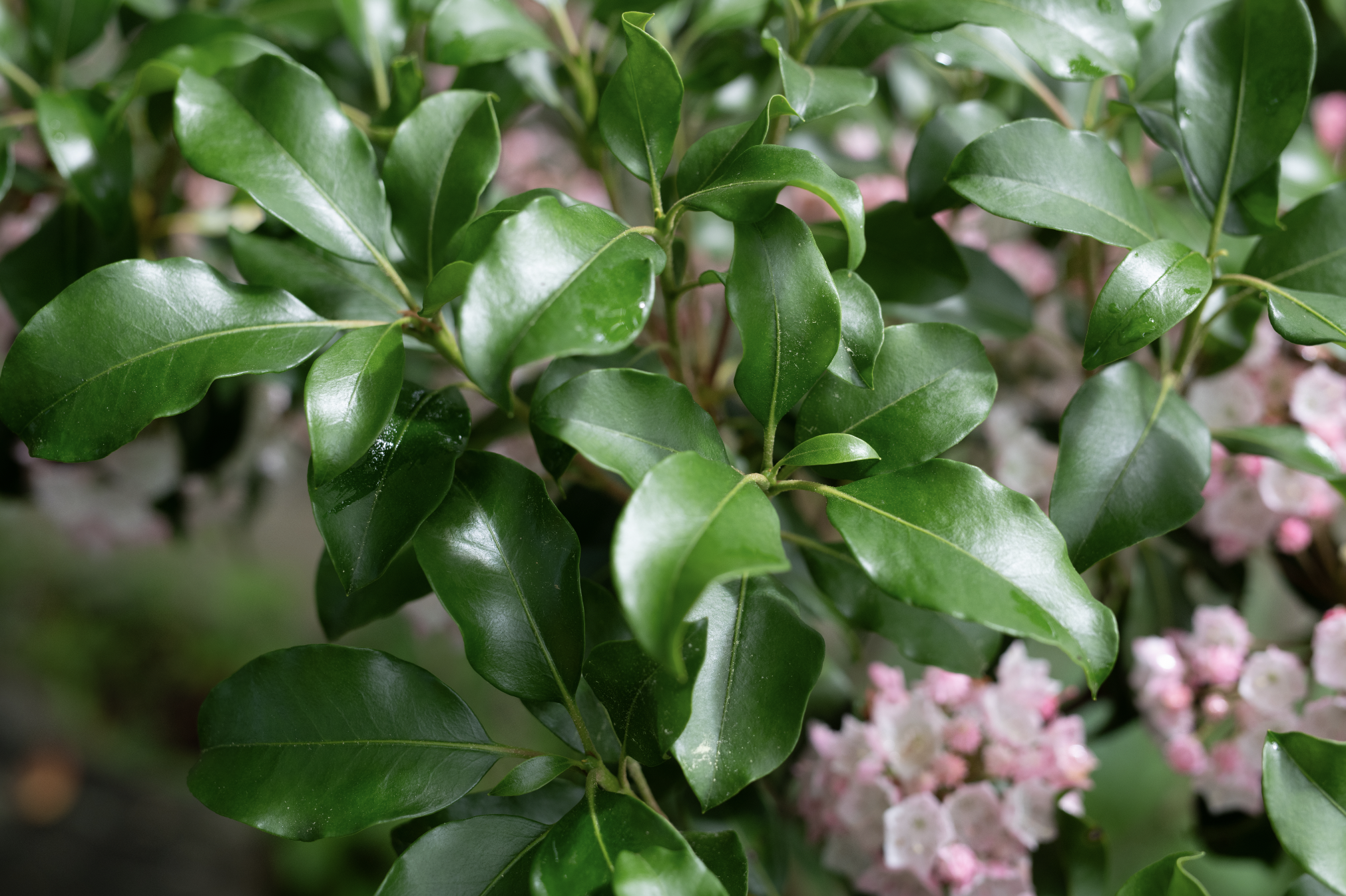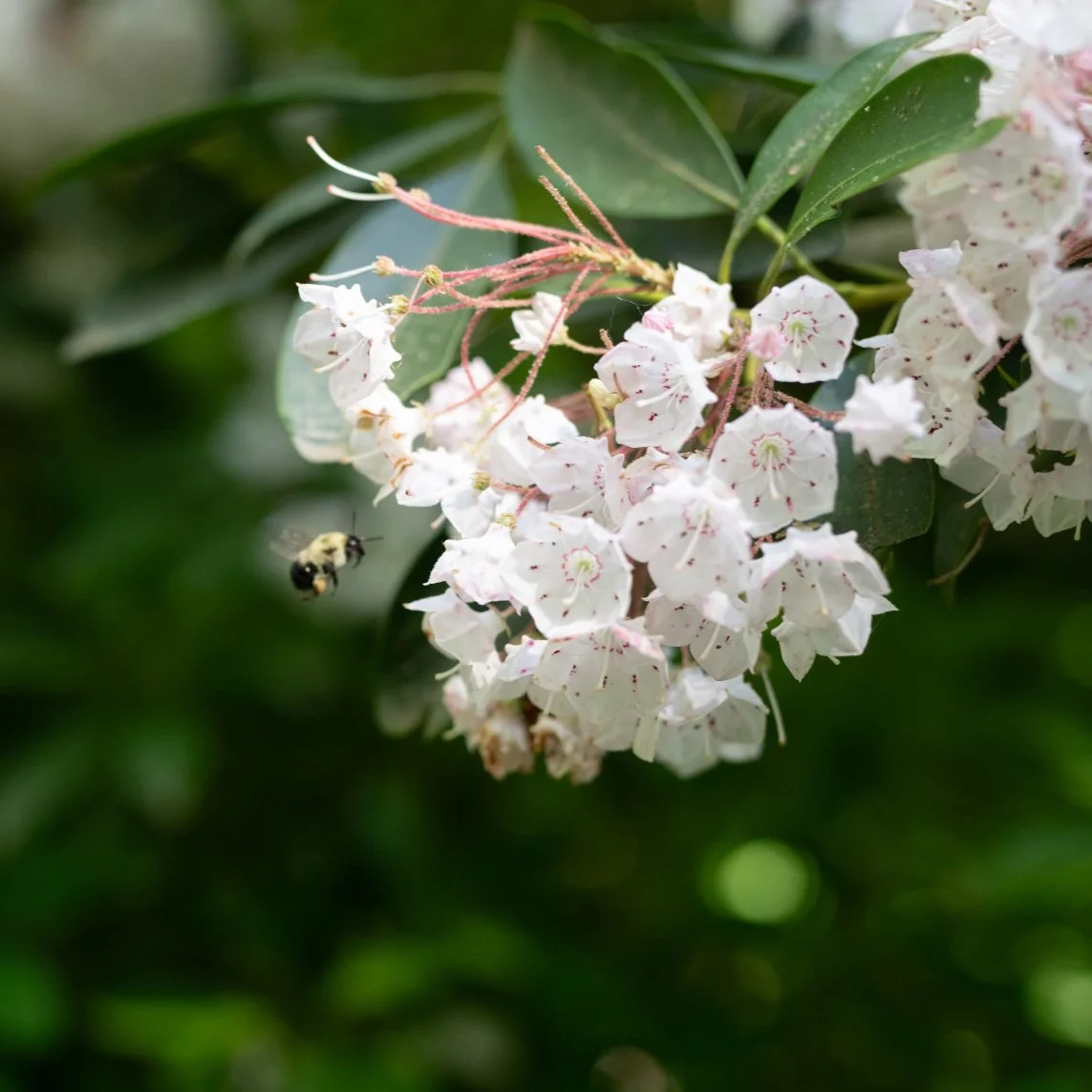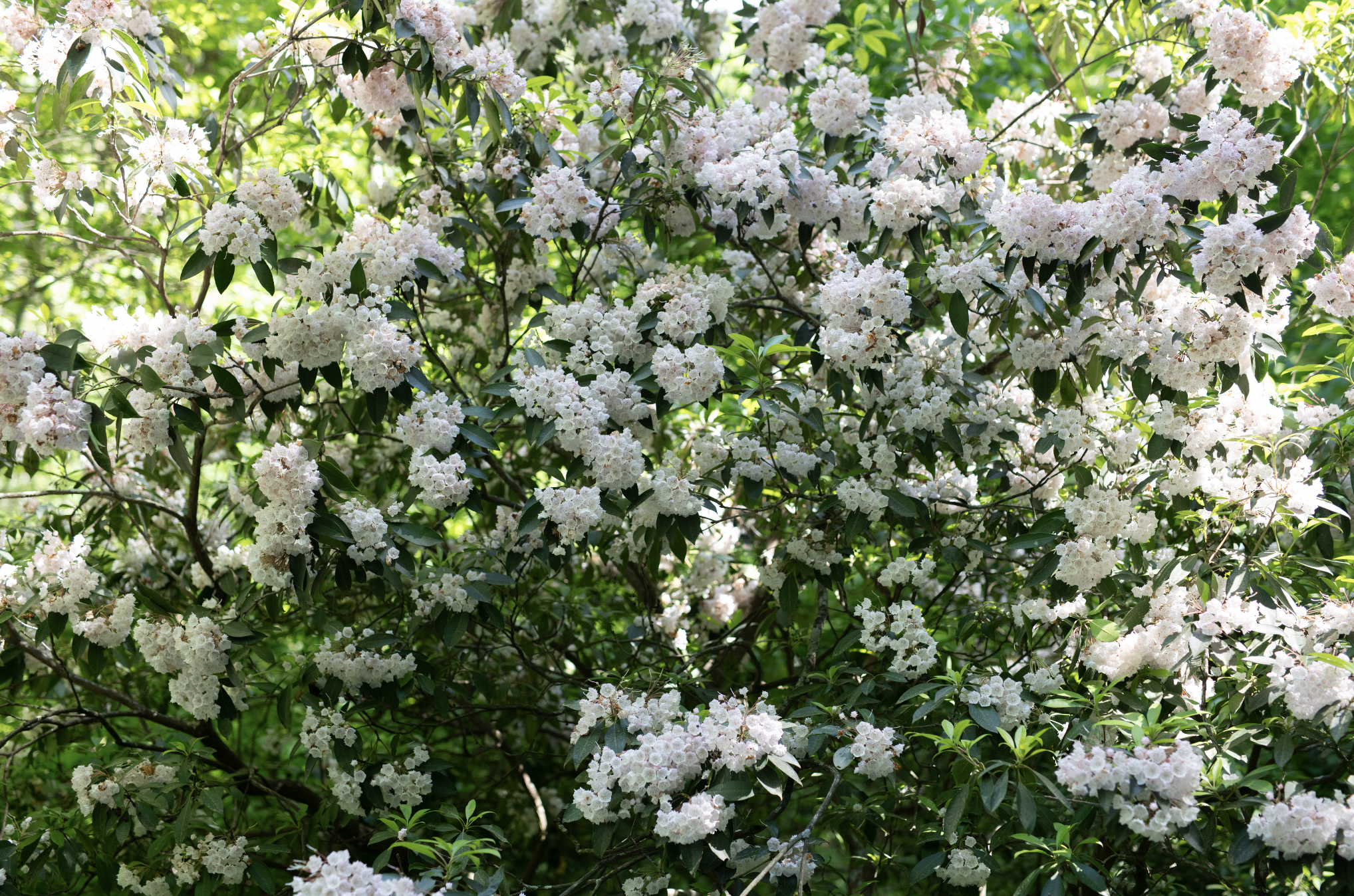Mountain Laurel
The Mountain Laurel (Kalmia latifolia) is a beautiful broadleaf evergreen home to the slopes of the Appalachian Mountains. In late spring, the cup-shaped flowers open to reveal hues of white and dusky pink.
The bell-shaped flowers appear in terminal clusters. Their anthers are touch-sensitive and will hurl pollen at the underside of pollinators upon their arrival.
The Mountain Laurel (Kalmia latifolia) is a regal broadleaf evergreen adorning the forests and slopes of the Appalachian Mountains. In late spring, its gnarled branches reveal pinkish white blooms that almost resemble stars.
Scientific Description: Mountain Laurels are evergreen shrubs in the Ericaceae (Heath) Family. They inhabit the cool, moist, well-drained soils of forests and slopes in the Appalachian Mountains. Native to the eastern United States, you can find this species ranging from New England states to Louisiana and the Florida panhandle. The plant typically grows 6 to 10 feet tall slowly as a dense, rounded shrub with crooked, spreading branches; sometimes, it may assume the shape of a small tree, growing up to 32 feet tall. The species is found in a variety of habitats: acidic forests, cool meadows, balds, mountain slopes, and woodland margins. The laurel also tolerates a wide range of light conditions—full sun to full shade—but thrives with sun in the morning and shade in the afternoon. In late spring to early summer, the shrub ignites with cup-shaped blooms ranging in color from white to dusky pink. In our region, this typically falls near May.
Habitat Value: This plant’s elegant flowers attract hummingbirds, butterflies, and other pollinators with enticing nectar. The plant is also a larval host for the Laurel Sphinx Moth (Sphinx lamiae), which feeds on the foliage of plants in the Heath and Olive families. The Mountain Laurel’s dense evergreen foliage provides winter cover for small mammals, birds, and invertebrates. Although the plant is toxic to domestic livestock, white-tailed deer may browse the leaves and twigs during winter and early spring when food sources are scarce.
Climb high with the Mountain Laurel!
Take Caution: Although beautiful, it is important to note that the Mountain Laurel is highly toxic to people, dogs, cats, and livestock due to arbutin and andromedotoxin. Do not consume any part of the plant.



